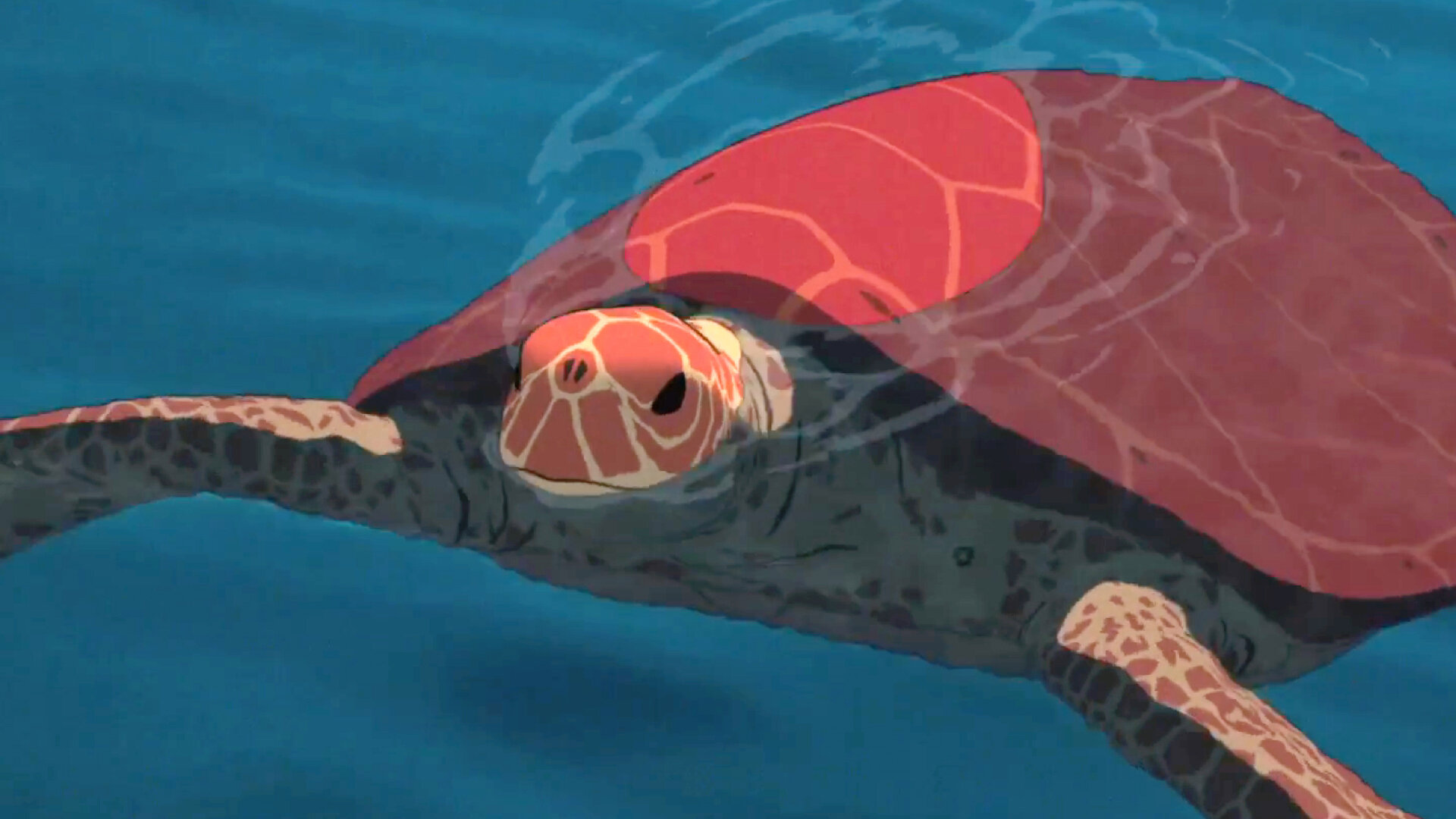The Red Turtle and the Fate of Hand-Drawn Animation
The Red Turtle is something of a double anachronism: there is no dialogue, and with the exception of the eponymous turtle, which was computer animated, the animation is hand-drawn. Despite the beauty of hand-drawn animation, it is in steady decline. This is easily explained: traditional, hand-drawn animation is very expensive.
The Red Turtle was co-produced by Studio Ghibli, one of the last great makers of hand-drawn animation. Studio Ghibli’s most recent film, When Marnie Was There, was released in 2014. The director of The Red Turtle, Michaël Dudok de Wit, has been making animated short films for decades, but he had difficulty securing financing for The Red Turtle, his first feature-length film.
The animation in The Red Turtle is stunning. It’s worth comparing to frames from earlier Studio Ghibli and Dudok de Wit films. Throughout its history, Studio Ghibli has developed a generally consistent aesthetic (with the exception of some of Isao Takahata’s films). And Dudok de Wit’s films differ from one another in interesting ways. This can be read as a preemptive elegy to hand-drawn animation.
This frame comes from Studio Ghibli’s When Marnie Was There, directed by Hiromasa Yonebayashi. The colors are bright. The girl is less detailed than her surroundings. In the background of the frame, lines fade into colors. In the foreground, one can see individual blades of grass.
This is from The Red Turtle. Again, in the bottom left, one can see individual leaves. But this would be easy to overlook. The colors are muted. The picture is bleak.
The Red Turtle is equally effective at capturing vibrant shades of green. As in Studio Ghibli’s films, the man is drawn with fewer details than his surroundings, which seem poised to envelop him. The lines separating the blades of grass and those differentiating the leaves of the trees are almost impressionistic. The patterns formed here don’t necessarily mimic the appearance of nature altogether, but they’re all the more breathtaking for it.
This frame is from another scene in When Marnie Was There. Here, the light breaks through the canopy of the forest. Mushrooms glow on a fallen tree. The presence of people feels almost intrusive.
Here, in Dudok de Wit’s short film Father and Daughter, there is no color and little detail. The lines are not sharply defined. All the attention is on contrast and shadow. The unseen sun has the largest presence. Seeing the shaggy tree and the blurry edge of the road, one feels tired.
The style in Isao Takahata’s The Tale of Princess Kaguya differs markedly from that of most other Studio Ghibli films. As in Father and Daughter, there is strong use of white space. Even in the middle ground, the grass is only color or it’s nothing at all. The blue and yellow of the flowers dominate the frame. Everything seems both calm and lively.
The sun sets in The Red Turtle. The shadows are subdued, and the glow of the horizon is far more prominent. Overhead, the sky is blue.
A man prepares to launch an airplane in Hayao Miyazaki’s The Wind Rises. He stands upright, and gazes skyward. He is in control, or at least is not afraid, of the world that surrounds him. His white shirt and hat contrast starkly with the green trees behind him. They belong with the white plane, and with the white clouds in the sky. Though for any length of time, of course, they never can be.
The clouds menace and the rock looks cold and unforgiving in this frame from The Red Turtle. The pale green plants perch precariously. The man wears a white shirt, but he is alone. His presence seems like an accidental blot on a scene of quiet desolation.
A woman runs across an indistinct landscape in The Tale of Princess Kaguya. Her feelings are so intense that nature must bend to accommodate them. There is a rupture in the animation: Color leaves. Detail leaves. One can see the shading. The woman’s red pants are striking against her gray surroundings.
There is no background, and the shapes are abstract in this frame from Dudok de Wit’s The Aroma of Tea. There are no people here, save for the ones who drew it.
In a singularly impressive technical accomplishment from When Marnie Was There, all of the children in this scene are in motion. They are not just moving repetitively back and forth or making identical or repetitive movements; each child is moving in an individual and meaningful manner. One can only see a fraction of what is happening before it is over, but an army of animators has drawn it all all the same.
A hand-drawn man stares at a computer-generated turtle. The turtle stares back. The man is armed with a stick. He has built the raft by hand. He is alone on the raft in the ocean far from home. In a few moments, the raft will be destroyed by the turtle.
